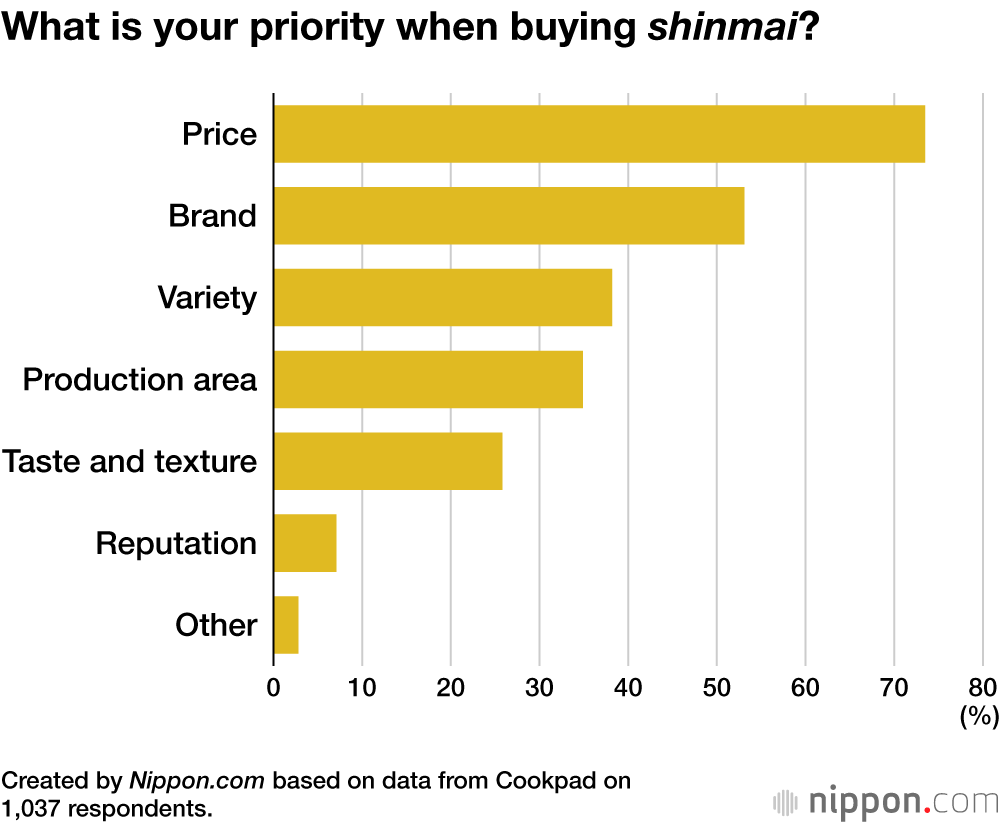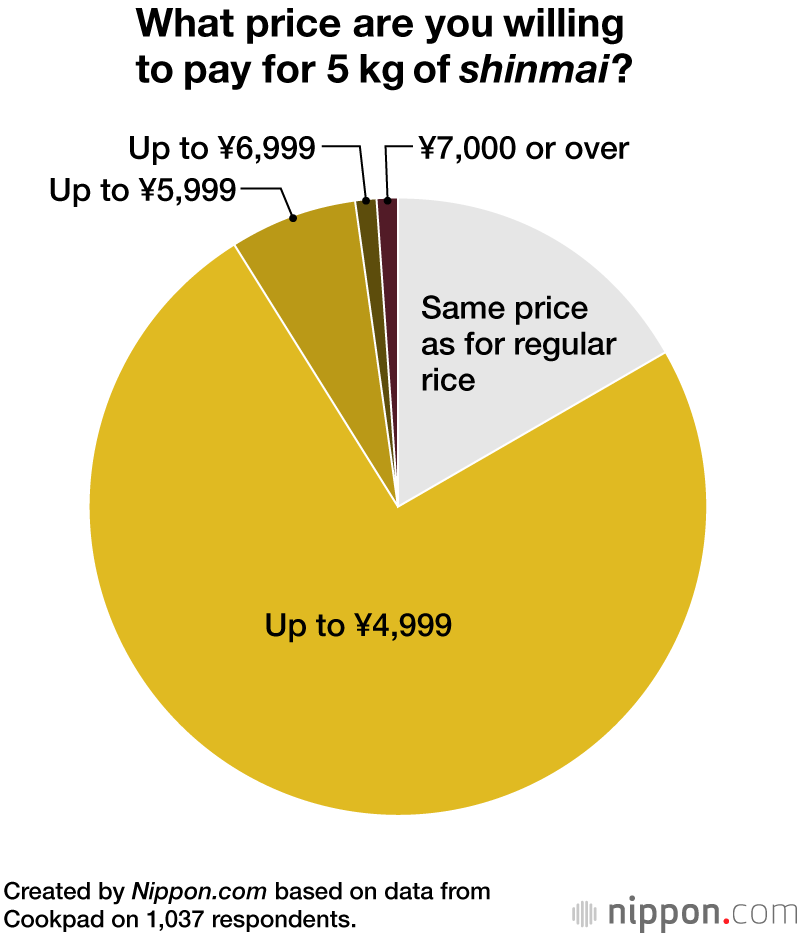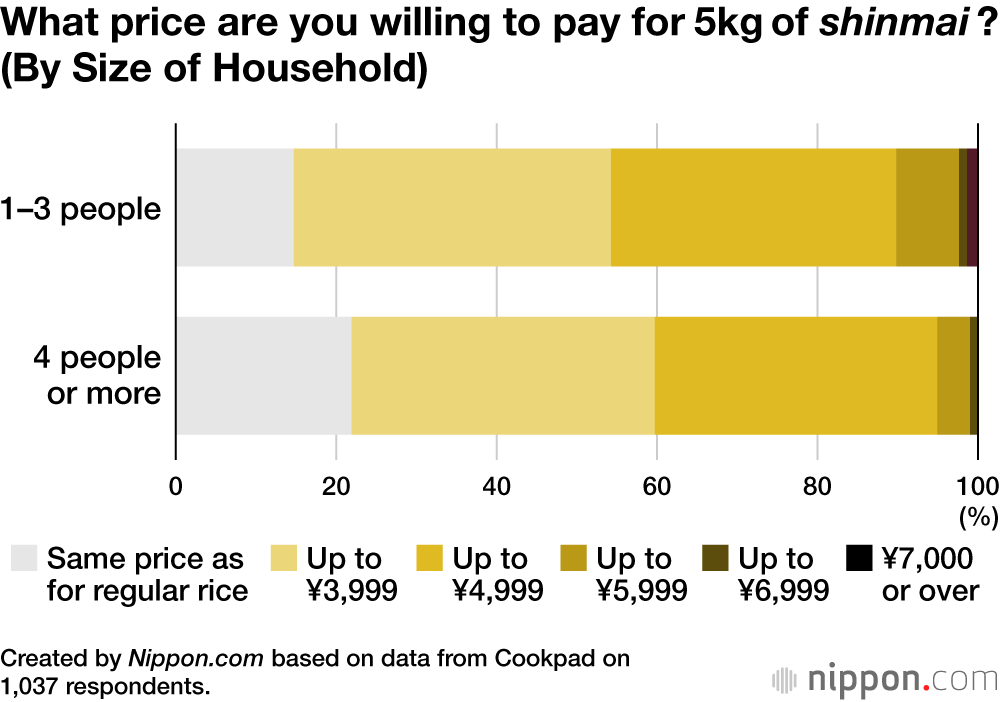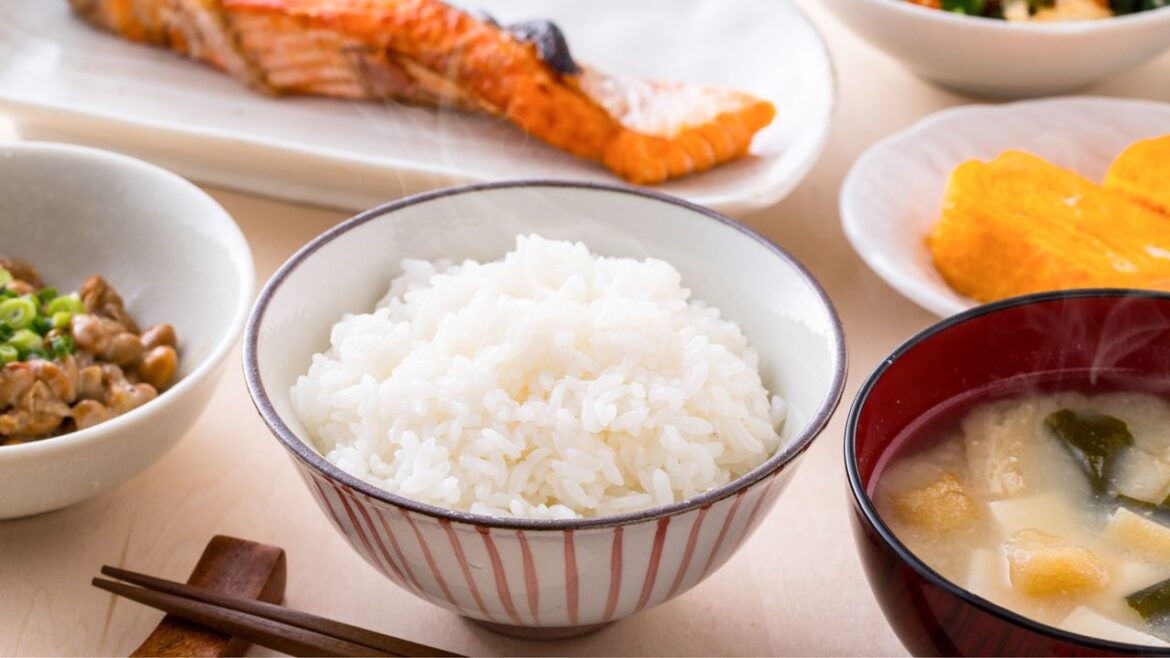Japanese consumers want to eat shinmai (newly harvested rice), but have limits on how much they are prepared to pay.
Price a Priority
A survey, conducted in September by the recipe-sharing website Cookpad, asked 1,037 site users about their attitudes toward shinmai (newly harvested rice). In total, 88.9% in total stated they “want to buy shinmai,” but price proved to be an obstacle.
More than 70% of respondents cited “price” as a priority when buying shinmai. The other main factors that respondents took into consideration were “brand” (53.1%), “variety” (38.2%), and “production area” (34.9%). (Koshihikari is an example of a variety, and Uonuma Koshihikari an example of a brand.)

Sticking Point
At 74.6%, the majority of respondents stated they were willing to pay a slightly higher price for shinmai, “up to ¥4,999” per five kilograms, which was much higher than the 16.9% who said they would only pay the “same price as for regular rice.”
However, the combined total of people willing to pay “up to ¥5,999,” “up to ¥6,999,” or even “¥7,000 or over” only came to 8.7%. The survey showed there was a psychological cut-off point of ¥5,000 for consumers, which they could not exceed, even for a taste of newly harvested rice.

By size of household, the combined totals of “up to ¥3,999” and “up to ¥4,999” for small households of “1–3 people” and large households of “4 people or more” showed little difference, with 75.2% and 73% respectively.
This gap was wider for people wanting to pay the “regular price” though, with 14.7% for small households compared to 21.9% for large households. Moreover, while 7.8% of small households were willing to spend up to ¥5,999, this fell by nearly half to 4.1% for larger households. The reality is that households with many family members are not able to stretch to paying more.

Data Sources
(Translated from Japanese. Banner photo © Pixta.)


AloJapan.com